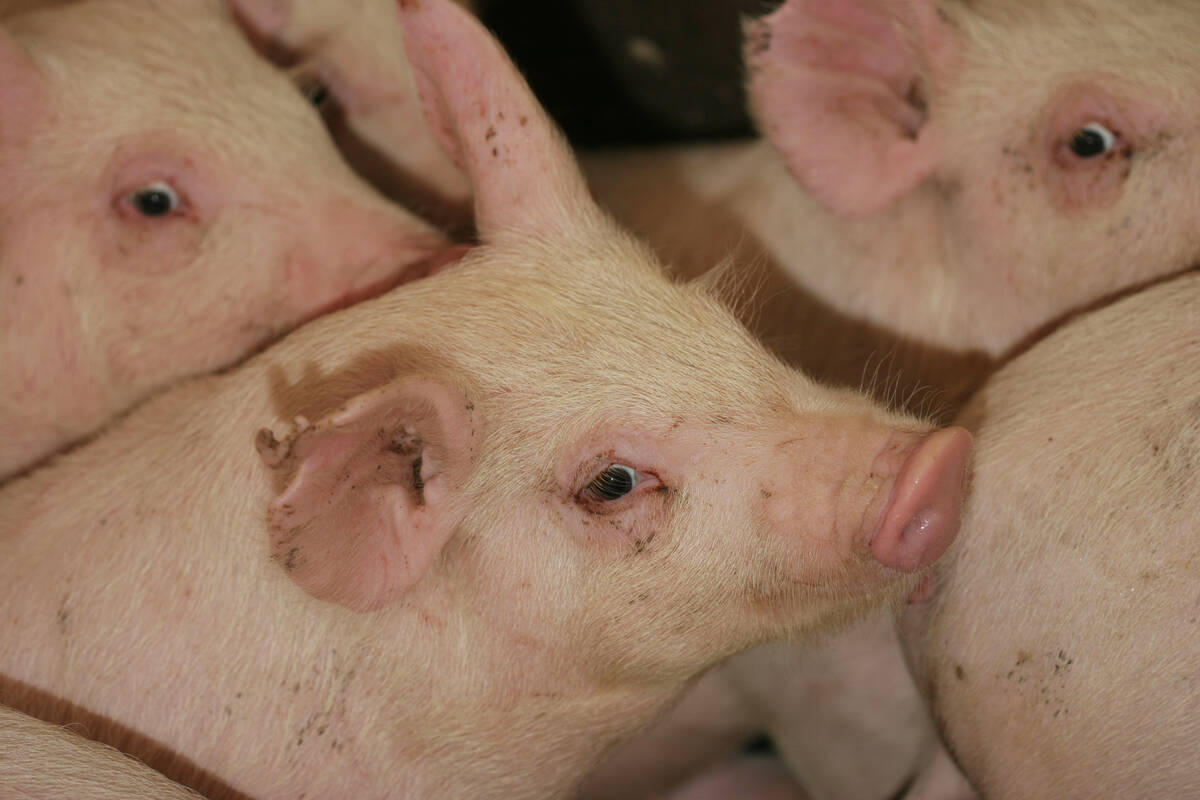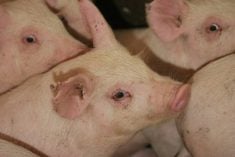Researchers artificially infecting elk and cattle with fatal brain wasting diseases hope the experiments solve long-standing mysteries associated with chronic wasting disease and BSE.
“We know a lot and we don’t know a lot, which is surprising and very different compared to other diseases,” said scientist Stephanie Czub, who heads the prion, pathology and virology unit at the Canadian Food Inspection Agency laboratory at Lethbridge where experiments on live animals started in August 2005.
“You answer one question and because of that, five new ones crop up.”
Read Also

The Western Producer Livestock Report – September 25, 2025
The U.S. national live price average for barrows and gilts was $81.21 Sept. 17. It was $78.37 Sept. 9. U.S. hogs averaged $106.71 on a carcass basis Sept. 17, up from $106.10 Sept. 9.
Scientists are trying to find out what triggers transmissible spongiform encephalopathic, or TSE, diseases, why they target the brains and whether there is genetic susceptibility in the human and animal forms.
For this project, scientists want to study the path of CWD infection to the central nervous system because it has never been conclusively shown.
“We have always assumed it is the same as BSE, but we don’t know, so that is what we are looking at,” Czub said.
Scientists hope that using samples from these animals will allow them to assess the sensitivity of testing methods. They also want to identify peripheral tissue that could lead to the development of effective live diagnostic tests for CWD. It may also help them learn whether there are different strains of CWD.
Scientists in Lethbridge infected 23 young elk with CWD nearly two years ago by force feeding them infected brain tissue. Another seven were left unaffected as a control group.
Researchers also surgically injected BSE into the brains of five steer calves under general anesthetic. One received material from the first Canadian BSE case reported in May 2003, two were infected with the next case and the remaining two received infection from the third case.
Regular blood, urine and saliva samples were collected from the animals, but scientists lack tests sensitive enough to find the disease in the samples.
The elk originated from Alberta farms in areas where CWD had not been reported.
They were euthanized once they began to deteriorate. The last of them were destroyed during the first part of April after showing clinical signs of CWD.
The elk showed typical symptoms, which include drooling, poor motor co-ordination and difficulty standing. They also experienced a change in social status as healthy animals in the group ostracized them.
“This is known for BSE and maybe for the first time, now seen in CWD as well,” Czub said.
The animals could still eat and drink but became thinner. Necropsies showed they had full rumens.
“They are ruminating, but it is an indication there is an impairment of the nervous system because rumination and uptake of nutrients in the gut are tightly regulated by the so-called autonomic nervous system.”
CWD appears to target a specific nerve, which could provide a link between it and BSE.
Post-mortems discovered the infectious prion protein in the brains, tonsils and lymph nodes as expected.
Under the microscope, brain samples showed characteristic holes that create the sponge-like appearance in all TSE diseases.
“It is very important to take the right sample because even in full blown clinical disease BSE, there is always the likelihood to have a false negative sample when you are not looking at the right target area,” Czub said.
Testing methods included rapid tests and immunohistochemistry, a procedure that looks for the prion protein with a specific antibody tagged with a dye. In cattle, the test group has remained healthy although two will be killed at the end of August when they are 24 months old.
“So far, we cannot detect any signs typical for BSE,” she said.
Natural infection through contaminated feed may take four to six years, but when surgical methods were used in Japan and the United Kingdom it accelerated the process and animals became stricken at about 21 months old.
Czub said scientists are not sure if the animals are in pain as the disease advances, but many veterinarians suspect it might feel like a headache.
She said the Lethbridge test animals received typical disease strains but while working at the national reference laboratory in Winnipeg two years ago she also examined atypical cases found in older animals.
The molecular fingerprint of the prion protein was different than typical cases. A case found in Manitoba was similar to the two in the United States in which older cattle were infected, Czub said.
Of about 300,000 confirmed cases worldwide, about 100 were atypical.
In Canada, nearly 148,000 BSE tests have been conducted nationwide since 2004 with 10 positive cases.
Alberta Agriculture provides detailed CWD test results. Between 2002-06, it checked 47,140 wild and farmed deer and elk.
One case was discovered in a farmed elk in March 2002, two cases in farmed white-tailed deer in November 2002 and 20 cases in Alberta wild deer since September 2005.















